info@graf.cat
November 2021
Ruta de autor 3/5
by Agustín Ortiz Herrera
A Colonial History of the Garden Cabinet
1
Wikipedia superstar, the personality with the most mentions on Wikipedia ahead of Michael Jackson. Carl von Linné, known as Linnaeus (Sweden, 1707-1778), developed the modern binomial taxonomic system that we still use today. He devoted his life to the classification of animal and plant species. With Latin nomenclature.
Taking advantage of colonialist expansion and the possibilities of the new circumnavigations of the globe, Linnaeus devised a programme to name an infinite number of plants “never” described before in the West. For some species he used vernacular terminology as a root. For others, especially the more exotic ones, he Latinised, by way of homage, the names of his disciples and other personalities. Names of white and European men.
Today, the scientific community continues this taxonomic tradition. Epistemologically speaking, the description and naming of species allows for the development and sharing of knowledge through a universal system, but it also defines a line of separation between humans and the natural environment, between the cultural and the wild. In this context, naming also means owning.
Link: <https://ajuntament.barcelona.cat/atlesbiodiversitat/ca/>.
2
Whasingtonia filifera
A botanical garden is nothing less than a cabinet of curiosities of living plant specimens. It is a place for the accumulation of knowledge that aims to satisfy the curiosity of the modern citizen. The Historical Botanical Garden of Barcelona was inaugurated at the Universal Exhibition of 1929, a little-known place today. In it, as well as a representation of local species, one can observe others that were popular in the gardens of the industrial oligarchy of the 19th century. The Whasingtonia, for example, native to the Californian peninsula, would later become a pop icon, incessantly reproduced in postcards on Sunset Boulevard.
George Washington (1732-1799) was the first president of the United States and is considered the Father of the Fatherland.
Link: <http://museuciencies.cat/wp-content/uploads/guiajbh.7501.pdf>.
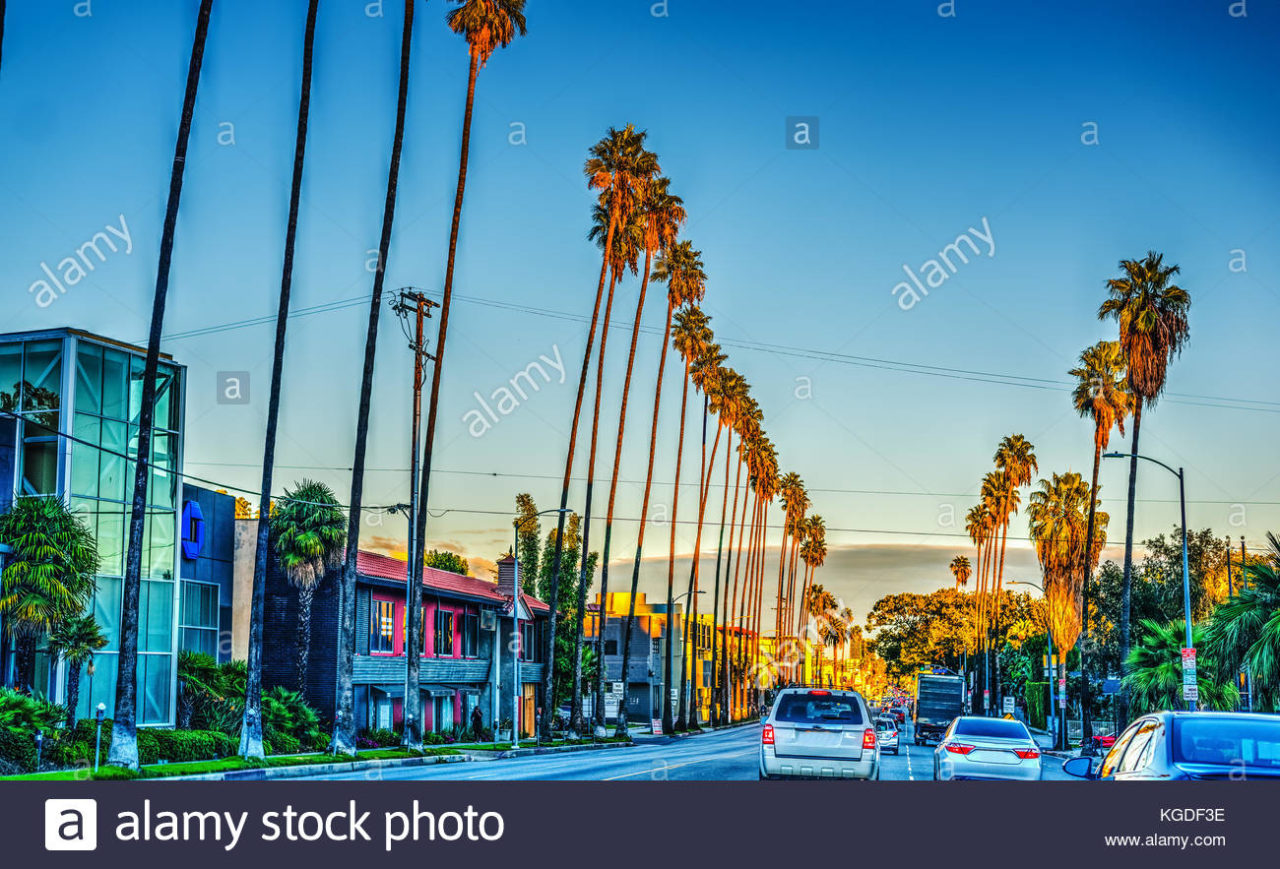
Sunset Boulevard, © Alamy Stock Photo.
3
Bougainvillea
The Historical Botanical Garden of Barcelona also hosts this genus of plant native to the dry areas of South America and very well integrated into the picturesque landscapes of the Mediterranean climate. It is known, among others, by the common names of “bugambilia” in Peru, Ecuador, Chile, Guatemala and Mexico; “papelillo” in northern Peru; “Napoleon” in Honduras, Costa Rica and Panama; and “trinitaria” in Cuba, Panama, Puerto Rico, Dominican Republic and Venezuela.
Louis Antoine de Bougainville, Count de Bougainville (1729-1811), was a military man, navigator and writer known for being the first Frenchman to circumnavigate the globe. He also planned a voyage to the North Pole that was never realised. In his Voyage Around the World, he described Tahiti as a paradise on earth, outlining the concept of the good savage that would later influence Rousseau’s utopian thoughts.
Link: <https://es.wikipedia.org/wiki/Buen_salvaje>.
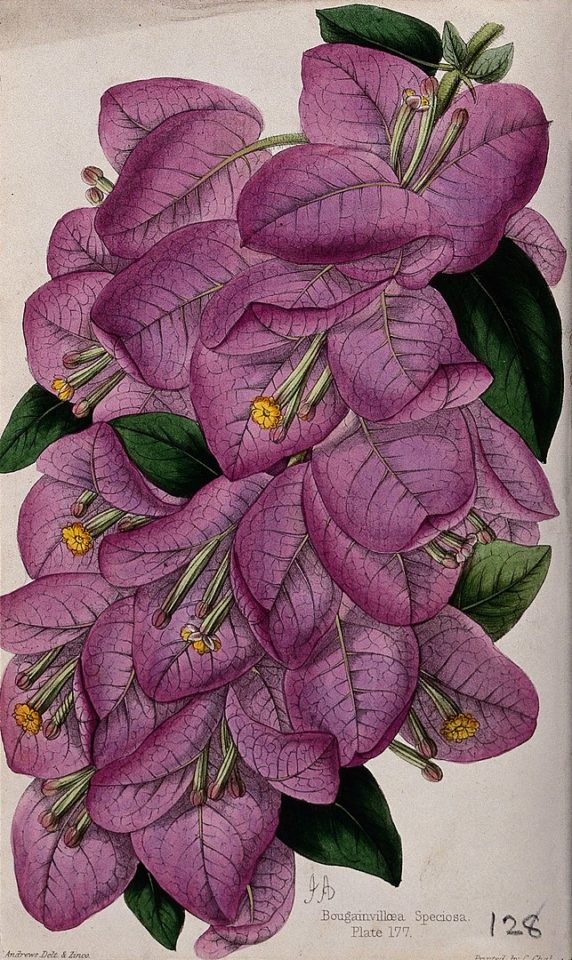
Coloured zincography by J. Andrews, 1861.
4
Robinia pseudoacacia
Before leaving the garden we are visiting, I recommend you look for the false acacia or bastard acacia. Native to the southeastern United States and widespread in temperate climates such as the Mediterranean. It is considered one of the 100 worst invasive plants in Europe. Before this designation it was popular in cities because of its resistance to pollution. Bees love its nectar.
Jean Robin (1550-1629) was a gardener in the former Jardin du Roi in Paris.
Link: <http://exocatdb.creaf.cat/base_dades/#>.
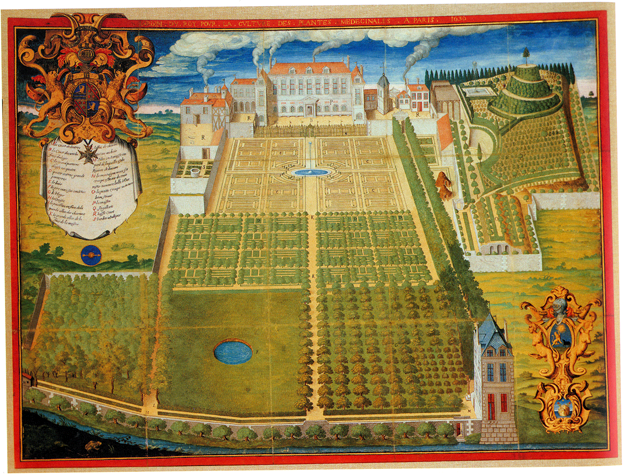
Jardin du Roi, Paris, watercolour by Frédéric Scalberge, 1636.
*
We continue our route entering the new Botanical Garden of Barcelona. To get here we walk along the Olympic Ring. This garden is dedicated to the botany of temperate climates such as the Mediterranean. You can find the following three species in the area dedicated to Australian botany and in the area dedicated to wild research.
5
Banksia praemorsa
Several species of banksia, almost all of them shrubs, can be seen here. This southern plant is well adapted to regular fires, as its seeds are stimulated by heat by opening their shells to germinate.
Joseph Banks (1743-1820) was a British naturalist who travelled with James Cook on his famous voyage to the South Seas between 1768 and 1771. The Endeavour was a vessel chartered jointly by the British Royal Navy and the Royal Society in search of resources and knowledge.

The Endeavor on the shores of New Holland, Great Barrier Reef, painting by Samuel Atkins, 1770.
6
Rhodanthe humboldtiana
Finding this plant is not easy. It is quite hidden in the garden. I didn’t manage to see it because it only grows in autumn. They explain that its flowers are yellow.
Alexander von Humboldt (1769-1859) was a polymath: Prussian geographer, astronomer, humanist, naturalist and explorer. Father of modern ecology.
It is said that he was the first man to climb the farthest point from the centre of the earth, Chimborazo (Ecuador). And I think it would be important to specify, so as not to assume colonialist presumptions, that he was the first western man.
Link: <http://www.cialc.unam.mx/cuadamer/textos/ca159-97.pdf>.
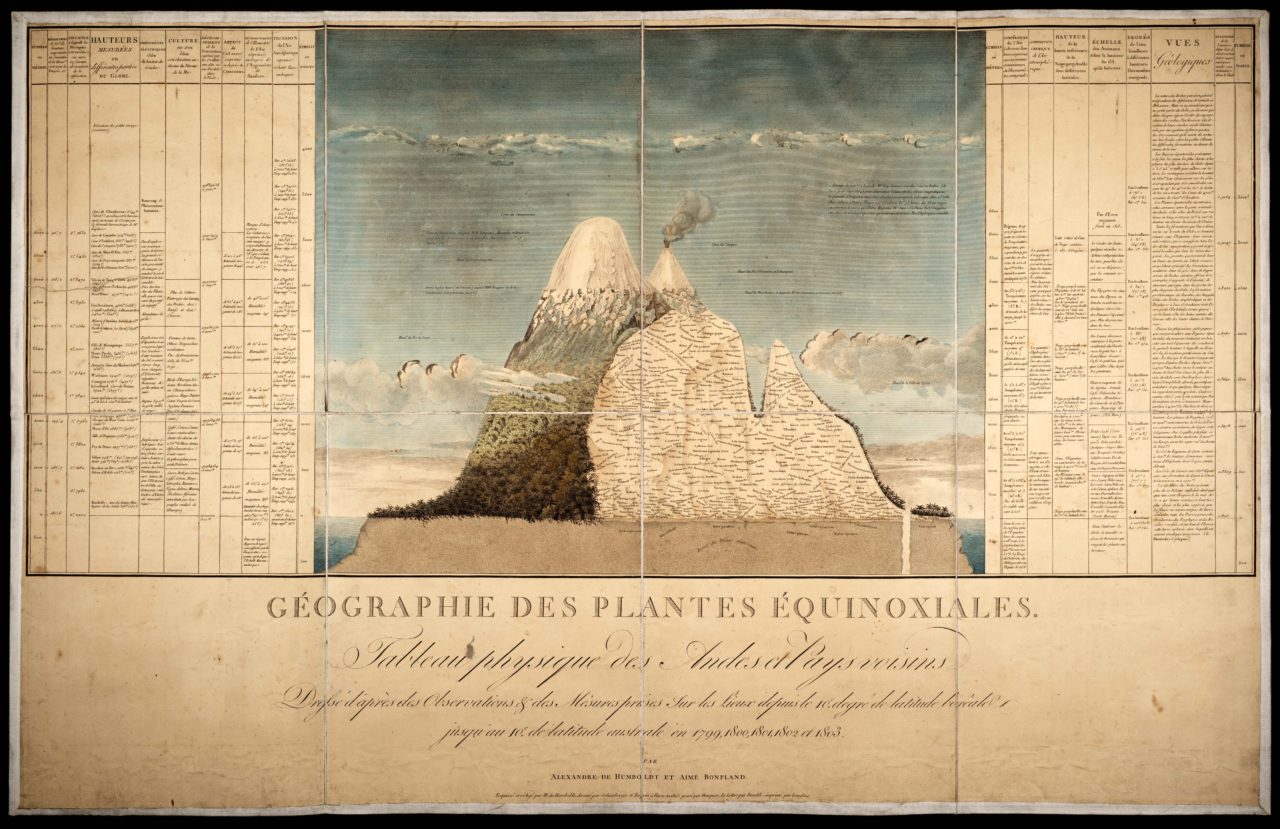
Colour print by Louis Bouquet from a drawing by Lorenz Schönberger and Pierre Turpin.
7
Hieracium attenboroughianum
Hieracium is a genus of plants common in Europe, but mainly in the Mediterranean basin. It is estimated that there are more than 12,000 species of which only 1,400 have been scientifically described. Species such as Hieracium pose the dilemma of overwhelming biodiversity. Other biological kingdoms such as bacteria or fungi are even more exuberant. Nevertheless, new species are described every year. Like this one, named in 2004 in honour of Sir David Attenborough, the charismatic voice of BBC nature documentaries. This species is not found on the trail, as it is endemic to Wales, but other hieraciums can be seen at the top of the garden, particularly those growing wild.
Link: <https://www.nationaltrust.org.uk/features/first-british-species-named-after-sir-david-attenborough>.
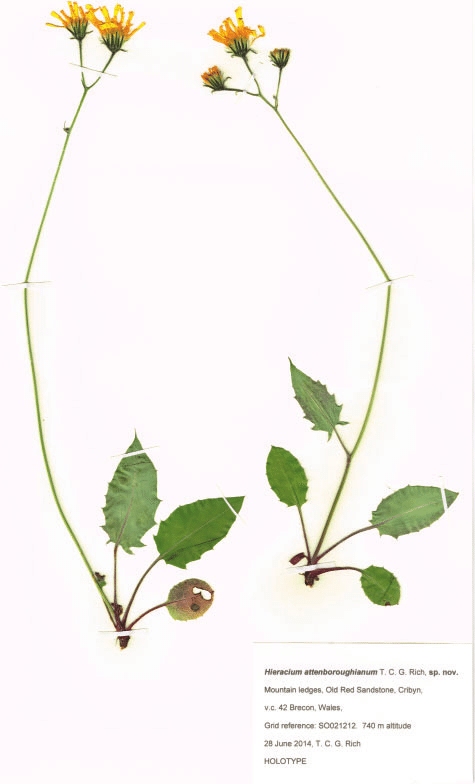
Photograph by Tim Rich, 2014.
–
Graf Route with Ruta de autor. Text by Agustín Ortiz Herrera, visual artist and researcher
This route is part of a series of five a series of five in which four other artists participate and that will be published in the coming months. Ruta de autor has selected four works that address the peripheries of Barcelona: Internet infrastructures (Mario Santamaría), the colonial garden (Agustín Ortiz Herrera), artistic gentrification (Zaida Trallero) and the homeless present (Leonor Urdaneta). We invite you to read, walk and stay tuned.






